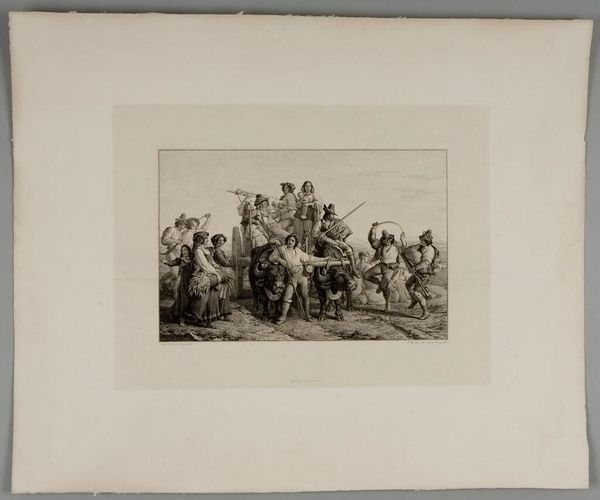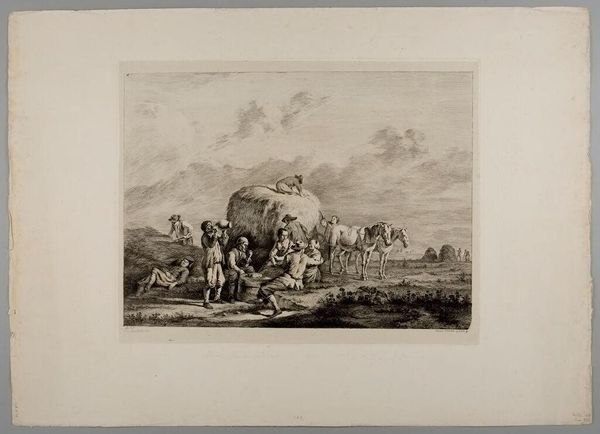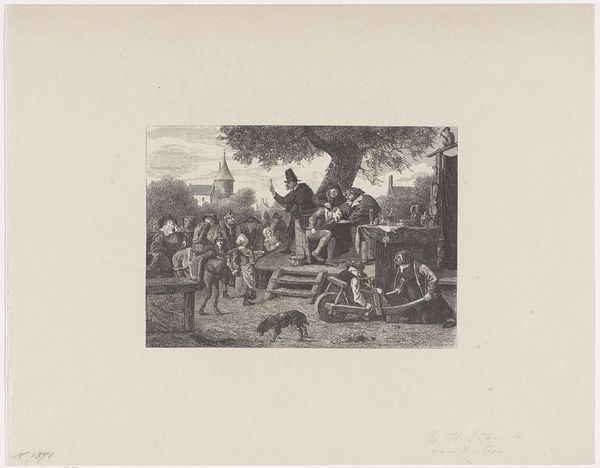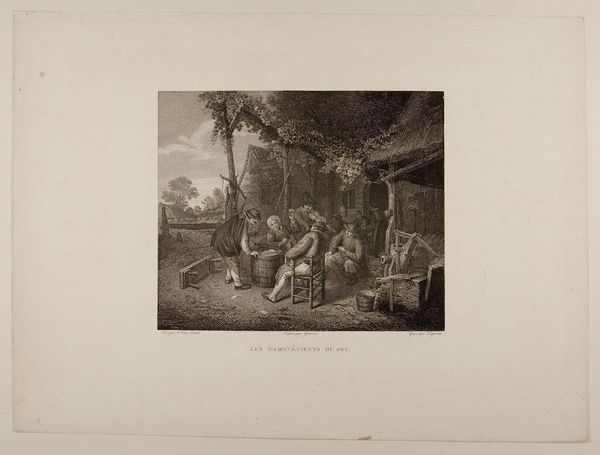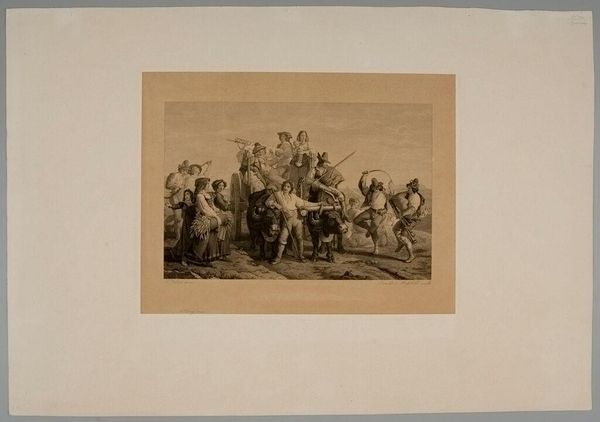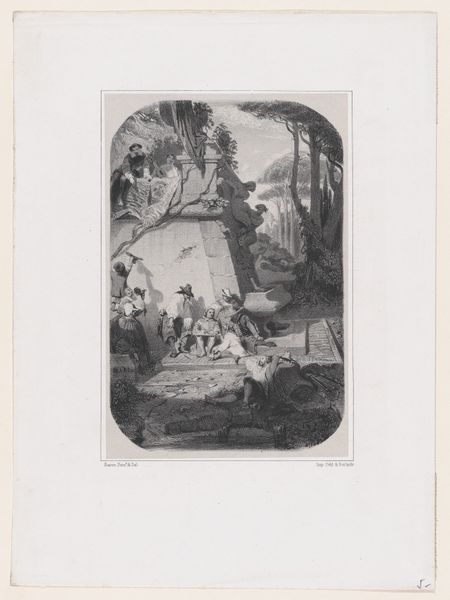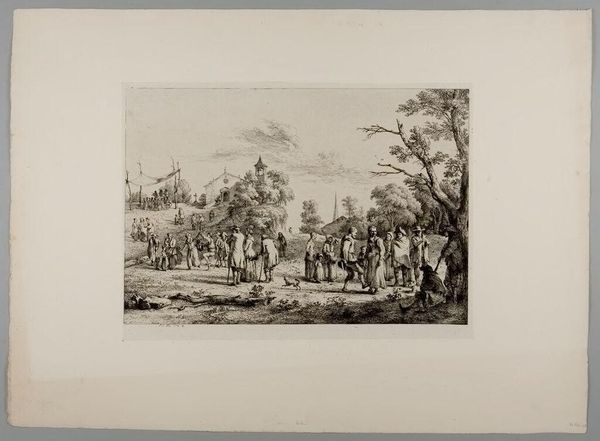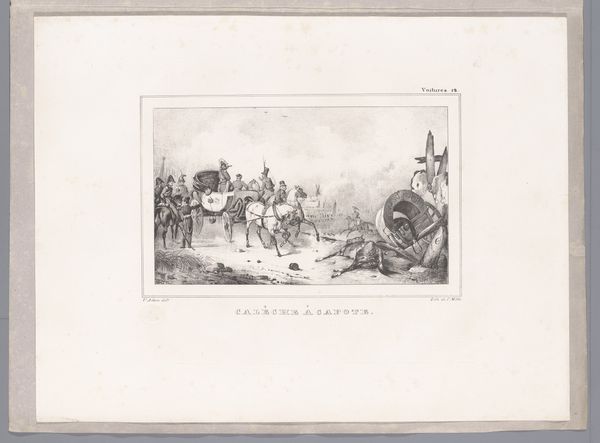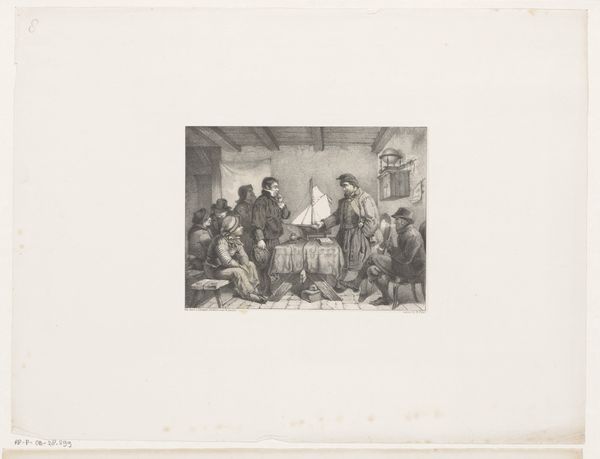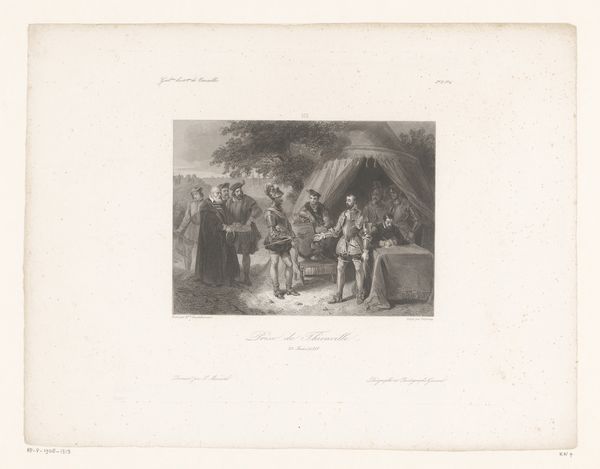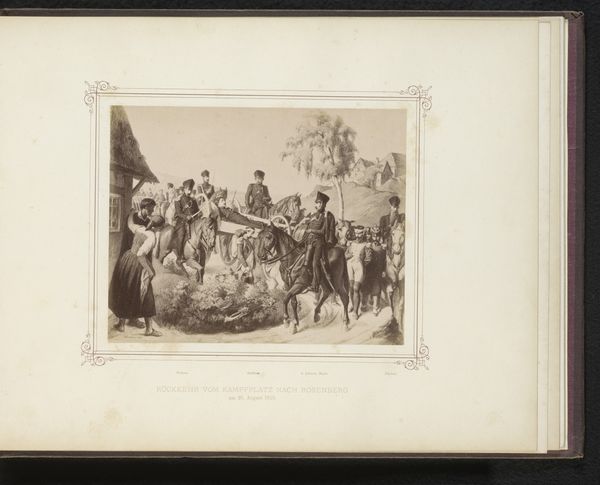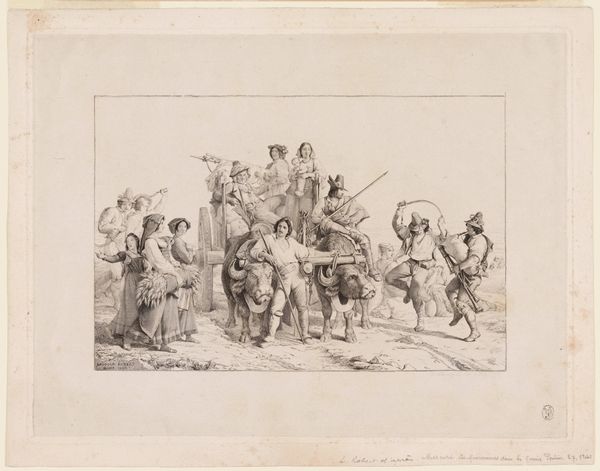
Market Place in Upper Hungary c. 19th century
0:00
0:00
Dimensions: image: 24.4 Ã 37.4 cm (9 5/8 Ã 14 3/4 in.) chine: 30.3 Ã 40.9 cm (11 15/16 Ã 16 1/8 in.) plate: 31.8 Ã 41.9 cm (12 1/2 Ã 16 1/2 in.) sheet: 55 Ã 71 cm (21 5/8 Ã 27 15/16 in.)
Copyright: CC0 1.0
Editor: This is Ferdinand Julius Wilhelm Laufberger's "Market Place in Upper Hungary." It shows a bustling scene. What I find striking is how much detail he gets into using what I assume is an etching. What can you tell us about how it was made? Curator: Well, consider the labor involved in etching. Each line meticulously carved to create the image before printing. This connects directly to the market scene depicted. What goods are being exchanged, and who benefits from that exchange? Editor: So, you’re saying the material of the print and the marketplace scene are connected by labor? Curator: Precisely. The print itself is a product of labor, mirroring the economic activity within the marketplace. Think about the social context, class, and labor dynamics at play. Editor: That's a new way to view it, seeing the artwork itself as a product, just like the goods in the market. Thanks! Curator: Indeed, analyzing the materiality offers a fresh lens.
Comments
No comments
Be the first to comment and join the conversation on the ultimate creative platform.
